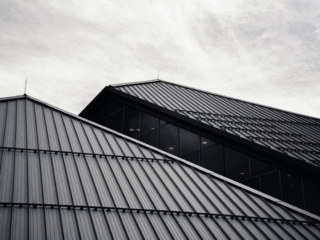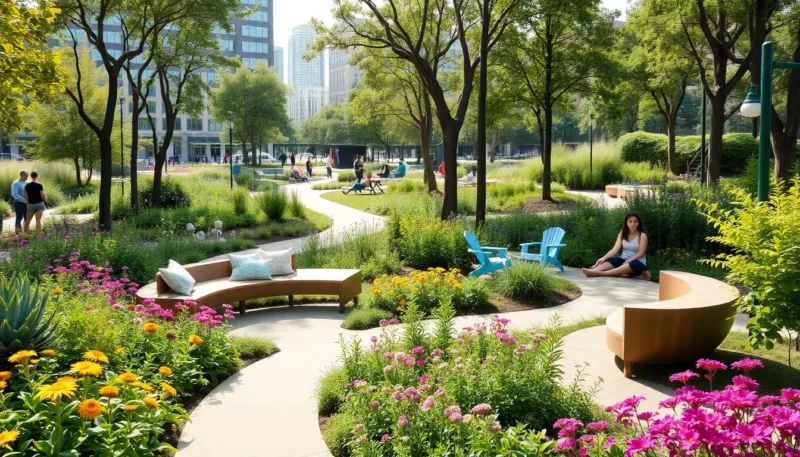
As more schools, councils, and developers place sustainability at the forefront of their outdoor projects, the design of footpaths and access routes is evolving. Modern pathway design is no longer just about creating safe, practical routes through outdoor spaces—it’s also about reducing environmental impact, supporting long-term durability, and aligning with green building practices.

Sustainable pathway design combines performance with environmental responsibility. It involves choosing materials, construction methods, and layouts that reduce harm to the environment, improve accessibility, and still meet the functional needs of users, whether that’s a school playground, a public park, or a multi-use outdoor space.
Playtop explores how pathway design can balance durability and usability with eco-friendly principles, and what solutions are available for projects looking to create more sustainable outdoor surfaces.
Why Sustainability Matters In Pathway Design
Outdoor surfaces, including pathways, play a key role in the way people interact with parks, play areas, and public spaces. But traditional surfacing materials can come with drawbacks—from excessive water run-off and heat retention to high levels of carbon emissions during manufacturing.
Choosing sustainable materials and construction methods not only lowers environmental impact but also helps reduce long-term maintenance costs. It supports biodiversity, improves safety in wet weather, and contributes to positive outcomes in local planning, especially where green infrastructure is encouraged.
With sustainability now a major consideration in school landscaping, council contracts, and playground surfacing, pathway design is an area where real gains can be made.
What Makes A Pathway Sustainable?
Sustainable pathway design goes beyond simply choosing recycled materials. It includes how the surface is manufactured, transported, installed, and maintained over time. Key characteristics of sustainable pathways include:
- The use of recycled or recyclable materials
- Permeable surfaces that support natural drainage
- Durable construction that reduces the need for frequent repairs
- Surfaces that support inclusive access for all users
- Low energy consumption during manufacture and installation
- Minimal disruption to surrounding ecosystems
Whether you’re designing a network of footpaths in a park or connecting outdoor play zones in a school, these principles help ensure your project delivers long-term value without unnecessary environmental cost.
Eco-Friendly Materials For Pathways And Walkways
There are now several surface materials available that support sustainable pathway design while still offering excellent performance, safety, and visual appeal.
One popular option is rubber mulch made from recycled tyres. This material offers a natural appearance, excellent drainage, and a soft, slip-resistant finish. It’s commonly used in playgrounds and parks, especially where safety and fall protection are important.
Another alternative is bonded gravel or resin-bound surfacing. These systems use a mix of aggregates bound with resin to create a smooth, porous surface that is ideal for paths, trails, and accessible routes. Many resin-bound products now include recycled materials and meet SUDS (Sustainable Urban Drainage Systems) requirements, allowing water to pass through rather than pooling on the surface.
Timber boardwalks or bark chip paths can also offer low-impact, temporary solutions in natural settings, especially where minimal disruption to the ground is essential. These are particularly suited to woodland trails or areas near conservation land.
The Role Of Permeable Surfaces In Sustainability
Permeable surfacing is key to reducing water run-off and preventing flooding, especially in areas with heavy foot traffic. Traditional hard surfaces like concrete and tarmac often lead to drainage problems, as they don’t allow water to soak into the ground.
Sustainable pathway design prioritises the use of porous or permeable materials that absorb rainwater, reduce surface pooling, and support natural water cycles. In some cases, this also contributes to improved biodiversity by allowing surrounding soil and plant life to thrive.
Using permeable surfacing not only supports the environment but also helps projects meet planning guidance and local council sustainability goals.
Designing For Long-Term Durability And Reduced Maintenance
A sustainable path isn’t just about how it’s made—it’s also about how it performs over time. Choosing materials and construction methods that reduce the need for frequent repairs helps lower the overall carbon footprint of the surface. It also ensures the space remains safe and accessible without excessive intervention.
Surfaces like rubber mulch and resin-bound gravel are designed to last for many years, even in busy environments. They resist wear from foot traffic, weather exposure, and shifting ground, making them a practical choice for areas that need to be both eco-conscious and hard-wearing.
Additionally, surfaces that don’t degrade or crack easily reduce the risk of trip hazards and make maintenance simpler for site managers.
Creating Inclusive Access Routes With Sustainability In Mind
Sustainability is about more than the environment—it also includes social responsibility. That means creating outdoor routes that are safe, accessible, and usable by everyone, including wheelchair users, parents with prams, and people with limited mobility.
Pathways designed with accessibility in mind often require a smooth, even surface with good grip. Sustainable materials such as resin-bound gravel or rubber-based surfacing meet these needs while still offering eco-friendly benefits. Where suitable, gentle gradients and clear edging can also be used to improve navigation and comfort for all users.
Combining inclusive design with environmental thinking ensures your pathways serve the entire community for years to come.
Blending Function With Aesthetic Appeal
One of the advantages of modern sustainable surfacing solutions is that they don’t compromise on looks. With a wide choice of colours, textures, and finishes available, pathway surfaces can be designed to complement existing landscaping, enhance school branding, or simply blend in with a natural environment.

Colour-matched bonded gravel or mulch paths can be laid in curves or zones to improve wayfinding and visual interest. This is especially useful in schools or parks, where different areas may need to be clearly defined for safety and flow.
Sustainable pathway design today offers the best of both worlds—practicality and performance combined with natural beauty.
Conclusion
Sustainable pathway design is about more than just ticking a green box. It’s about making smart, future-focused decisions that support the environment, improve long-term usability, and meet the everyday needs of people using the space.
From recycled rubber mulch to resin-bound gravel, there are now more eco-friendly options than ever for creating safe, accessible, and attractive pathways. Whether you’re planning a school playground, a local authority park, or a multi-use community trail, combining functionality with environmental responsibility leads to stronger outcomes all round.
If you’re looking to build sustainable pathways for your outdoor space, speak to a specialist surfacing contractor who understands how to balance performance, safety, and sustainability. The right surface can help you meet your environmental goals without compromising on quality or design.












